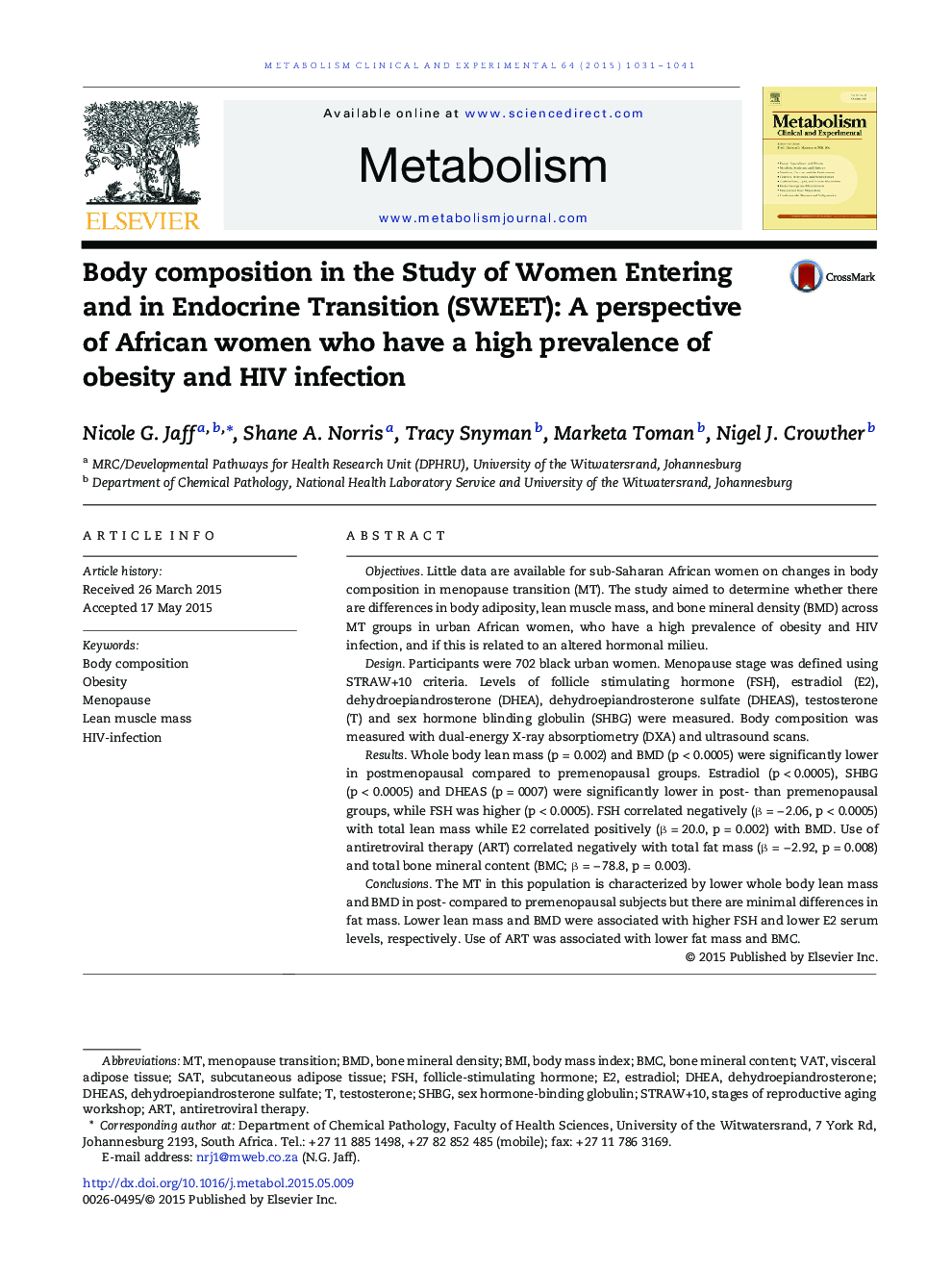| Article ID | Journal | Published Year | Pages | File Type |
|---|---|---|---|---|
| 5903221 | Metabolism | 2015 | 11 Pages |
ObjectivesLittle data are available for sub-Saharan African women on changes in body composition in menopause transition (MT). The study aimed to determine whether there are differences in body adiposity, lean muscle mass, and bone mineral density (BMD) across MT groups in urban African women, who have a high prevalence of obesity and HIV infection, and if this is related to an altered hormonal milieu.DesignParticipants were 702 black urban women. Menopause stage was defined using STRAW+10 criteria. Levels of follicle stimulating hormone (FSH), estradiol (E2), dehydroepiandrosterone (DHEA), dehydroepiandrosterone sulfate (DHEAS), testosterone (T) and sex hormone blinding globulin (SHBG) were measured. Body composition was measured with dual-energy X-ray absorptiometry (DXA) and ultrasound scans.ResultsWhole body lean mass (p = 0.002) and BMD (p < 0.0005) were significantly lower in postmenopausal compared to premenopausal groups. Estradiol (p < 0.0005), SHBG (p < 0.0005) and DHEAS (p = 0007) were significantly lower in post- than premenopausal groups, while FSH was higher (p < 0.0005). FSH correlated negatively (β = â 2.06, p < 0.0005) with total lean mass while E2 correlated positively (β = 20.0, p = 0.002) with BMD. Use of antiretroviral therapy (ART) correlated negatively with total fat mass (β = â 2.92, p = 0.008) and total bone mineral content (BMC; β = â 78.8, p = 0.003).ConclusionsThe MT in this population is characterized by lower whole body lean mass and BMD in post- compared to premenopausal subjects but there are minimal differences in fat mass. Lower lean mass and BMD were associated with higher FSH and lower E2 serum levels, respectively. Use of ART was associated with lower fat mass and BMC.
